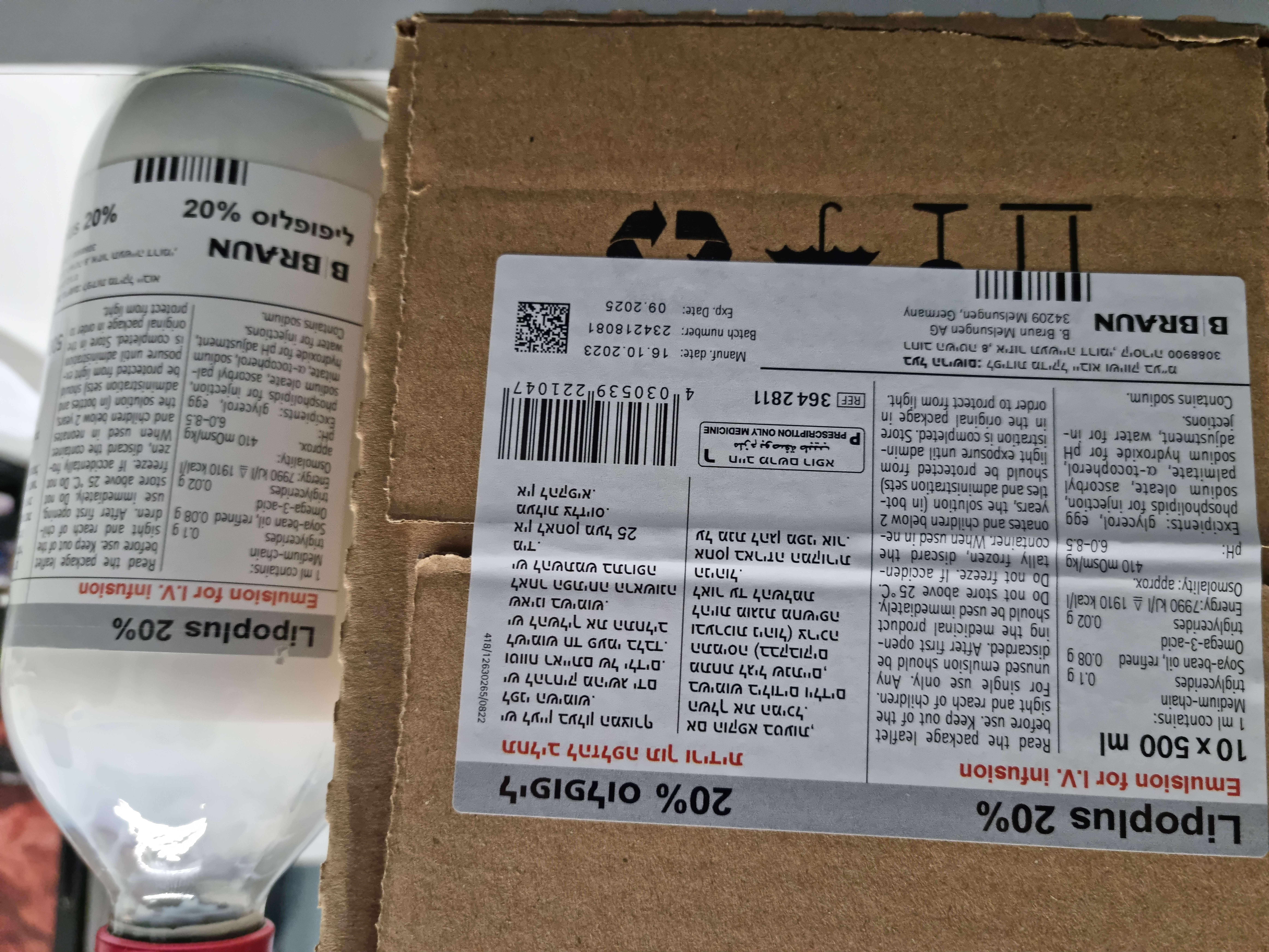Quest for the right Drug

ליפופלוס 20% LIPOPLUS 20 % (OMEGA-3, SOYA BEAN OIL, REFINED, TRIGLYCERIDES, MEDIUM-CHAIN)
תרופה במרשם
תרופה בסל
נרקוטיקה
ציטוטוקסיקה
צורת מתן:
תוך-ורידי : I.V
צורת מינון:
תחליב לאינפוזיה : EMULSION FOR INFUSION
עלון לרופא
מינוניםPosology התוויות
Indications תופעות לוואי
Adverse reactions התוויות נגד
Contraindications אינטראקציות
Interactions מינון יתר
Overdose הריון/הנקה
Pregnancy & Lactation אוכלוסיות מיוחדות
Special populations תכונות פרמקולוגיות
Pharmacological properties מידע רוקחי
Pharmaceutical particulars אזהרת שימוש
Special Warning עלון לרופא
Physicians Leaflet
Pharmacological properties : תכונות פרמקולוגיות
Pharmacodynamic Properties
5.1 Pharmacodynamic properties
Pharmacotherapeutic group: Solutions for parenteral nutrition, fat emulsions ATC code: B05B A02
Lipidem 200mg/ml is intended to provide energy and polyunsaturated ("essential") omega-6 and omega-3 fatty acids as part of parenteral nutrition. For this purpose Lipidem 200mg/ml contains medium-chain triglycerides, soya-bean oil (long-chain triglycerides, mainly omega-6), and triglycerides containing omega-3 fatty acids (long-chain triglycerides).
Medium-chain triglycerides are more rapidly hydrolysed, faster eliminated from the circulation, and more completely oxidised than long-chain triglycerides. Hence they are a preferred energy substrate, particularly when there are disturbances of the degradation and/or utilisation of long-chain triglycerides, e.g. in case of lipoprotein lipase deficiency, deficiency of lipoprotein lipase cofactors, carnitine deficit and impairment of the carnitine-dependent transport system.
In detail, long-chain omega-3 polyunsaturated fatty acids are precursors for anti- inflammatory eicosanoids. They reduce pro-inflammatory cytokine production from arachidonic acid and increasing anti-inflammatory cytokine production from eicosapentaenoic acid and docosahexaenoic acid. This may be of benefit in patients at risk of developing a hyperinflammatory state and sepsis.
Only the long-chain omega-6 and omega-3 triglycerides supply polyunsaturated fatty acids, so these are primarily included for prophylaxis and therapy of essential fatty acid deficiency and, only secondarily, as a source of energy. Lipidem 200mg/ml supplies essential omega-6 fatty acids, mainly in the form of linoleic acid, and omega-3 fatty acids in the form of alpha-linolenic acid, eicosapentaenoic acid, and docosahexaenoic acid.
Phosphatides, besides their function as emulsifier for the triglycerides, are components of the cell membranes and guarantee their fluidity and biological functions.
Glycerol, which has been added with the aim to render the emulsion isotonic to blood, is a physiological intermediate in the metabolism of glucose and lipids: it is metabolised to yield energy or is utilised for the synthesis of glucose, glycogen and triglycerides.
The ratio of omega-6/omega-3 fatty acids in Lipidem 200mg/ml is approximately 2.5:1.
Safety pharmacological investigations have not revealed any specific effects other than the above-mentioned nutritive effects, which are the same as when the particular substrates were administered orally.
Pharmacokinetic Properties
5.2 Pharmacokinetic properties Distribution The dose, rate of infusion, metabolic state and individual factors concerning the patient (level of fasting) are the most relevant factors determining the maximum serum triglyceride concentration- Placental tissue preferentially takes up long-chain polyunsaturated fatty acids from the maternal circulation and regulates their transfer to the foetal circulation. Biotransformation After infusion, triglycerides are hydrolysed to glycerol and fatty acids. Both are incorporated in physiological pathways for energy production, synthesis of biological active molecules, gluconeogenesis and resynthesis of lipids. Elimination Both the triglycerides of soya-bean oil and medium-chain triglycerides are completely metabolised to CO2 and H2O. Omega-3 acid triglycerides are either completely oxidised to CO2 and water or incorporated in cell membranes and then metabolised to eicosanoids and cytokines. Up to 30% to 70% of the infused lipids are oxidised within 24 h, whereas the elimination rate largely depends on nutritional state, hormonal balance, simultaneous infusion of glucose solution, etc. Renal excretion does virtually not occur.

שימוש לפי פנקס קופ''ח כללית 1994
לא צוין
תאריך הכללה מקורי בסל
לא צוין
הגבלות
לא צוין
מידע נוסף
